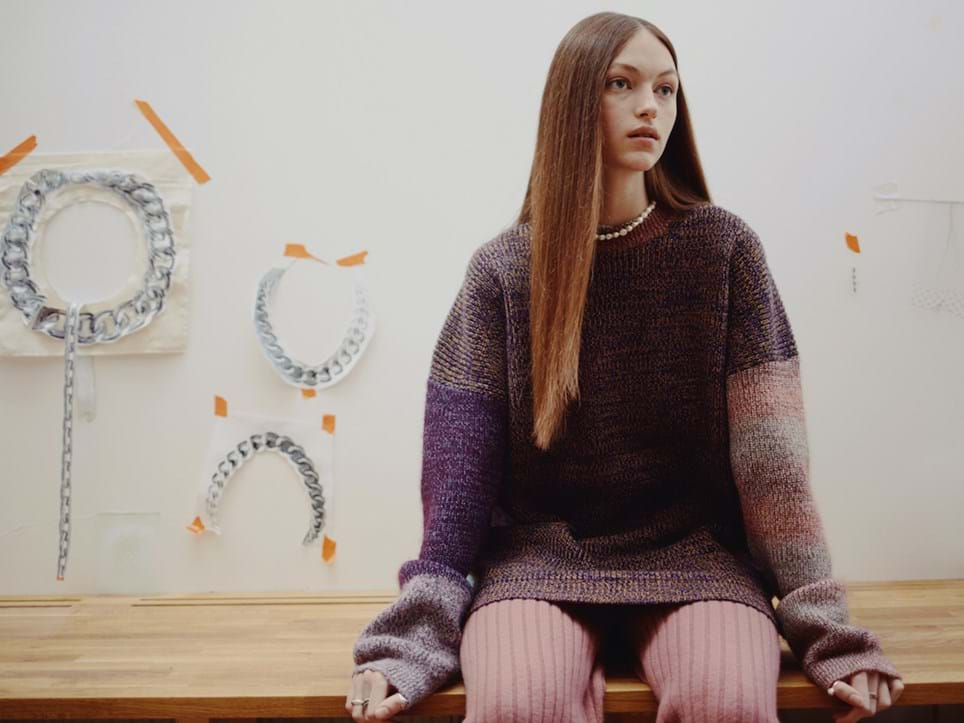Photography by Guen Fiore, Styling by Sam Ranger.
Within the fashion-sphere, nothing is quite as special as a one of a kind piece of clothing. With anything and everything being accessible by the click of a computer mouse, and the popularity of 'it' pieces increasing the risk of everyone dressing the same, the exclusivity of a bespoke item makes it a truly individual entity.
It also means it can be made a lot more sustainably. Take the Waste Yarn Project: the brand whose taking unwanted yarns from factories and creating one-off knitwear that have been designed by the hands of fate, a.k.a their wheel of fortune that picks the different yarns the knits consist of.
We asked Siri Johansen, the founder of Waste Yarn Project, to share more about her sustainable company, and how it came into fruition.
How did this idea come about? How exactly did you discover all the wasted yarns at the factories?
I've been working as a knitwear designer for over a decade now, so I've seen a lot of different factories all with huge cupboards of left over materials. However, it was not until my now business partner, Sebastien, started his own knitwear production company in 2013 that I realised how quickly it accumulates. As I used to travel to the factory 2-3 times a year, I could follow his stock of leftovers from nothing when he moved into his new space, until it felt like a mountain 6 years or so later. 
Photography by Guen Fiore, Styling by Sam Ranger.
Given the materials you are working with, that are already found and existing, how does that play into how each sweater is made? They are essentially a one off depending on the yarns, right?
Yes, each jumper is a one off using the left over yarns. We have developed a playful chance system – every sweater is designed by a wheel of fortune. The knitter spins the wheel for every panel, and this directs her to a colour group and the technical info for the yarn to use. 
Photography by Noah Sheldon.
Did you partner with just one factory to work on this, and was it hard to convince them given the essentially one-off nature of each piece?
I suggested the idea to one of the more creative suppliers I've worked with before, as he is always up for a new challenge! I have known the owner since I started working, so we have a good relationship and trust and he instantly believed in the project! But it took some testing in the factory before we managed to convince the people that would work on it that it was doable.
We understand you're a longtime industry insider, what compelled you to start thinking in this sustainable way?
It's been a long time coming, I've always had an interest in making things from scraps and left overs, both from a practical, environmental and design point of view. I like the design ‘restrictions’ it makes you work with. Since working in bigger fashion houses it’s not been on the agenda, also seeing all the excess that is being produced became harder and harder to swallow. So after seeing all these perfectly good yarns just sitting around in boxes it sparked an idea and a want to do something with them, also an exciting challenge figuring out how to use them. I also felt it was the right time for me to move on to something new.
Photography by Noah Sheldon.
More More More!
+ Sustainable September: Alexandra Hakim...
+ Store Stories: The Maiyet Collective...
+ Surprise Me!









